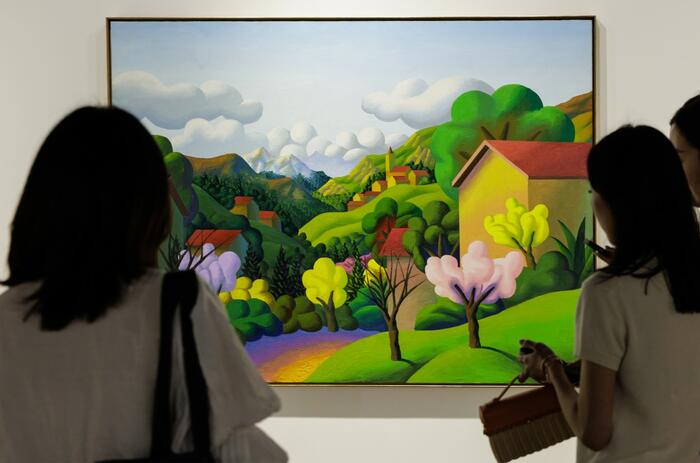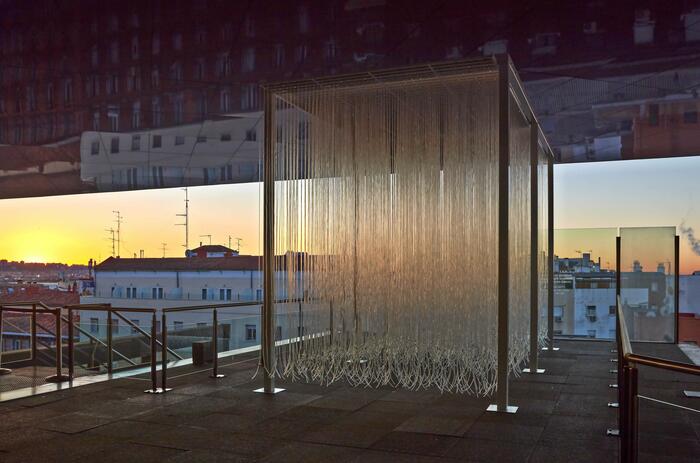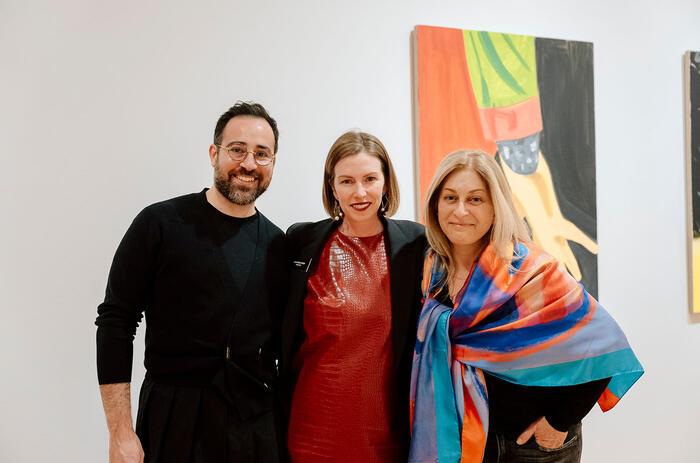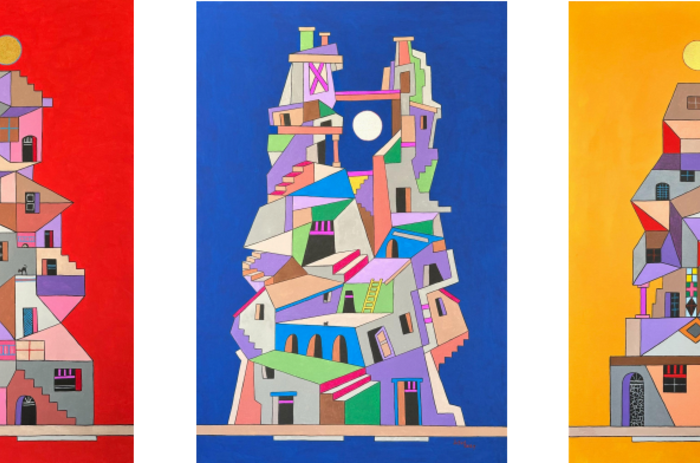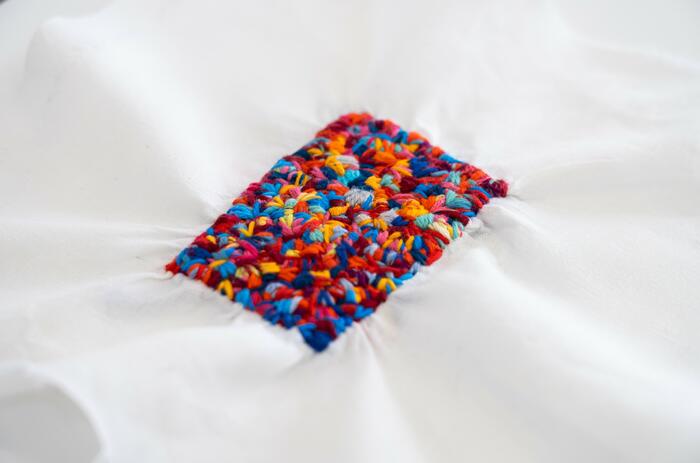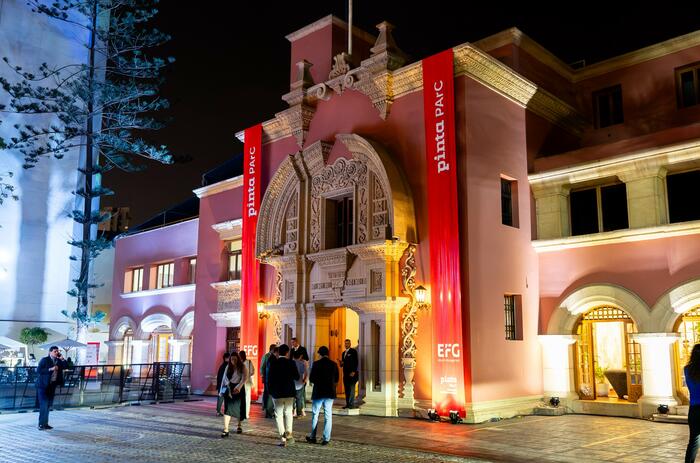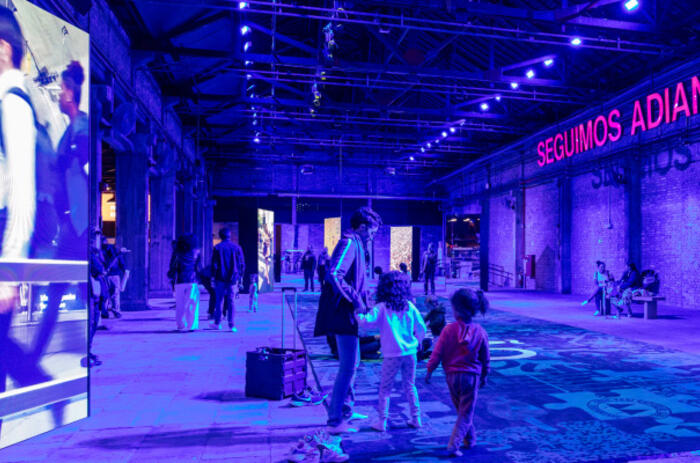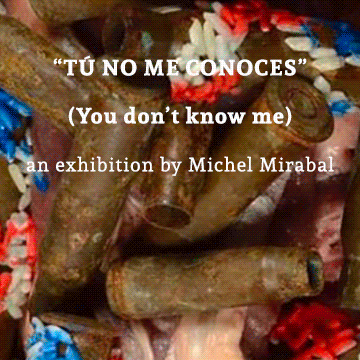JONATHAS DE ANDRADE: “L'ART DE NE PAS ETRE VORACE”
La Commanderie de Peyrassol presents a monographic exhibition by Jonathas de Andrade - Maceió, Brazil, resident in Recife -, within the framework of the cultural season, held this year under the aegis of the Ministries of Foreign Affairs and Culture of Brazil and France. Philippe Austruy - owner of the site and collector of contemporary art -, echoing the desire for a “multidisciplinary, innovative and committed” season and the reflections and contemporary issues defined as thematic axes, in particular, climate and ecological transition, invited the artist to design an exhibition in this vast wine-growing domain in the south of France.
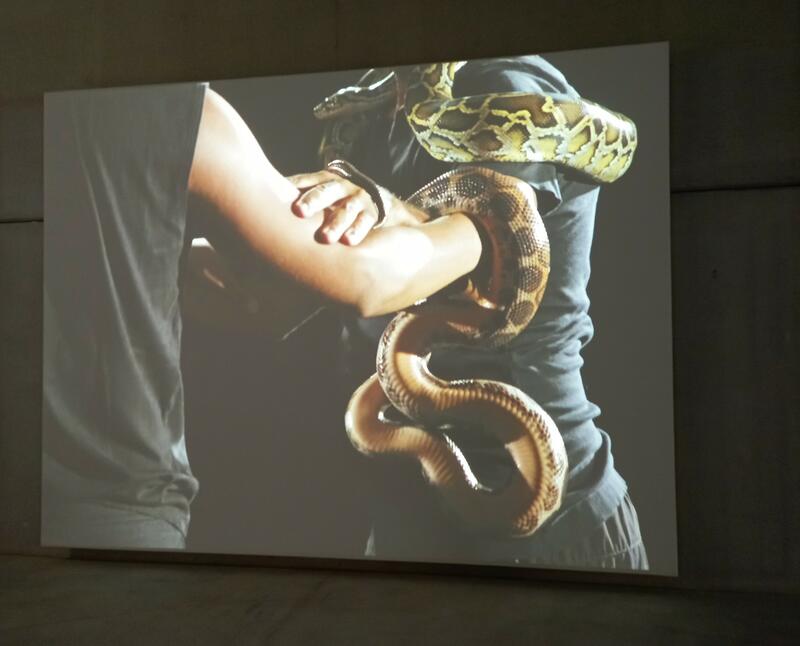
To imagine an exhibition in a place where nature, agricultural work, wine production and preserved biodiversity form the first of the ecosystems. Inaugurating a new space, the exhibition “L'art de ne pas etre vorace” – The Art of not being voracious – offers thus a reading of Jonathas de Andrade's work through his approach to nature and territories, affections and emotions, revealing all the poetic force that runs through his practice.
Literature has been one of the sources of inspiration for Jonathas de Andrade. Clarice Lispector-1920,1977-, a Brazilian writer who was very dear to Jonathas de Andrade's heart, inspired him for the title of the exhibition “L'art de ne pas etre vorace”, as well as for some of the pieces that make up the selection of works, some unpublished and others shown for the first time in the Provence-Alpes-Côte d'Azur region. The writer, who grew up in Recife and imbued her literature with Brazilian culture, particularly that of the northeast, where Jonathas de Andrade is from, has produced a considerable literary oeuvre in which she subtly explores human contradictions. The notion of voracity and its profound ambiguity, opening a vast field of reflection, between destructive desire and creative impulse. These reflections are the same contradictions that Jonathas de Andrade develops in his poetic and disturbing works and that, in Commanderie de Peyrassol, find application in the field of the relationship with the living, with nature and with the territory.
Presenting narratives often unknown in France about the contemporary history of Brazil, and in particular of the North of the country, the artist also addresses land sharing by highlighting the plurality of territorial realities. Through “Fome de Resistencia - Fundamento Kayapó Menkragnoti” -2019- and “Exercicio Construtivo para uma Guerrilha Sem Terra”-2016-, the struggle for survival as well as the protection of places and those who live there are revealed. The central space of the exhibition is occupied by “Fome de Resistencia - Fundamento Kayapó Menkragnoti”, which challenges the viewer, not only because of its monumental dimension, but also because it places him or her in front of an uncomfortable position of denial of collective memory in the face of political realities, social, cultural and ideological conventions of the contemporary world. A work conceived by superimposing an old map of the region and intervened with traditional drawings made by the Kayapó women of the village of Pukany -south of Pará-, it establishes a parallelism between the attempt to define a territory through property, typical of Western culture, and the motifs of this indigenous community of the Amazon that symbolize their understanding of the world and nature, beyond any territorial demarcation. “Exercicio Construtivo para uma Guerrilha Sem Terra” documents a part of Brazilian history through its territorial logics and ambiguities. Here, families of the Landless Rural Workers Movement - MST - set up makeshift tents in the Igarassu region, allowing them to work the land and quickly relocate elsewhere in case of eviction. Bringing these two works together offers a broader view on the notions of land, nature and domination.
At the core of the exhibition the two videos “O Peixe” -2016- and “Nó na garganta” -2022- are articulated as a network of works traversed by axes that coexist with each other and form a dialogue on the relationships between man and animal, sometimes powerful, sometimes vulnerable. While tenderness is visible, at the same time as death or danger, and fear coexists with sensuality, the artist involves the viewer in the path of an open and free reflection on the concomitance of life forms. Jonathas de Andrade thus stages the tension between “caring” and “destroying” while raising the question of the limits, physical and symbolic, of this cohabitation. “O Peixe”, one of his most recognized works since its first presentation at the 32nd São Paulo Biennial -2016-, presents a fictional rite, created by the artist, in which real fishermen kiss, caress and soothe freshly caught fish. The film oscillates between the codes of ethnographic cinema, which is based on a documentary record, and a camera that translates a gaze devoid of all the distance characteristic of this “cinema of the real”. “Nó na garganta” shows a group of young people working in a zoo who are invited to interact with snakes. The images of peaceful approaches between species gain narrative intensity through zooms on different parts of the body, interspersed with documentary scenes of ecological disasters that seem to remind us of humanity's disconnection with nature. In the context of the exhibition, the works presented, although distant from each other, are united by the artist's obsession, to observe the human tragicomedy, especially that of the Brazilian Northeast.
Offering the image of a world in which there is little space left untouched by human activity-from pollution to the traces and ruins of the past-the artist offers the allegory of this same world, where the living persists and resists, particularly through the photographic series “Maré” -2014- and the new piece designed for the exhibition. “Maré”, a work made up of 109 black and white photographs mounted on wooden panels shows the state of the rising waters through the submerged piles that form the foundations of an abandoned yacht club in Maceió, in northeastern Brazil. Below each image there is an indication of the time the photo was taken, the number of men present and the state of the lunar cycle. Jonathas de Andrade pointed out that the periods of high affluence corresponded to those of full moon, questioning, in a poetic way, the role played by the tides in desire. Thus, between invasion and conflict, destruction and survival, the works conceived by the artist testify that parallel to a destructive tendency, creation, freedom and desire survive.
Although they do not have a chronological approach, the selected pieces present the trajectory of the artist, who always works exploring the expressive and plastic limits. They are arranged and dialogue pertinently in the heart of the room that was once the large production hall in which the winery was built. The exhibition illustrates the basic ideas that make up Jonathas de Andrade's production: the revision, analysis and deconstruction of Brazilian society, its history, its amnesia and the interest in reflecting a subjectivity that transcends the individual and is understood collectively. “Morder a língua” a work made in papier-mâché, resin and red pigments presented at the 59th Venice Biennale -2022-, together with more than 250 popular expressions, faithfully interprets the artist's approach. Through “Morder a língua”, that is, to refrain from speaking or to repent, an everyday phrase, he shows how these expressions are used on a daily basis, and manifest emotions that vary between love and passion, and the heartbreaking violence of the historical present in which we live. It reveals how language can be a powerful metaphor for finding new ways out and new answers to the present.
His narrative invariably uses socio-political criticism as a tool to create bridges between popular and contemporary arts - installations, sculptures, videos, photographs - that absorb popular wisdom with a poetic and ironic language that draws on the painful and surreal reality of the Brazilian people. Leit motiv that has always accompanied him, was reflected in the original work created for the 12th Biennial of Lyon -2013- “Nego bom” a very popular sweet made with banana, sugar and lemon, which is eaten in Pernambuco in Northeastern Brazil; project with which he was awarded the prize to the French-speaking artist in that Biennial.
In the last twenty years, Jonathas de Andrade has created artistic projects that question the construction of the Brazilian identity and point out the failure of the modernist utopia of the early twentieth century. Through his creations, the artist explores the collective memory and history of his country using strategies that blend fiction and reality. While the political character of his artistic practice, marked in particular by the alliance of theatrical forms and ethnological approaches, has often been emphasized, the exhibition is based on the way the artist stages, reveals and documents the negotiations, conversations and relationships we have with others, the environment and the living.
Jonathas de Andrade never ceases to surprise us with the development of a narrative of great formal clarity, the work of art as a work of research. A process of an almost anthropological precision, where he reveals the relations of domination largely camouflaged by the story of a democratic, harmonious and multicultural Brazil. A work of memory based on the assembly and classification of images, texts and life stories to reconstruct a personal account of the past. His works reflect his questions and observations about everyday life in Brazil and its “zones of discomfort”, such as working conditions and the question of “Brazilian identity”. Faced with the reflections and observations that the artist questions, it is necessary to ask ourselves: How do we inhabit the world? In the face of this emotional shock, can these images move us and make us act?
For many years Jonathas de Andrade has been investigating the nature of images and the place Brazil occupies in the world. The relationship between the spectator and the image, as well as the possibility of making a work of art from events that are hidden or deformed by the media. He explores the paradoxes of modernist utopias, inherited from European colonization, in conflict with more local traditions and beliefs. He travels and elaborates works in which through installations, photographs and videos he denounces the situation of various human groups in extreme situations due to political, social or economic issues, thus questioning society, its history, its oblivion.
The artist's approach, with a truly communitarian vision, is based on the conservation of a general pattern of classical tragedy in which the image alone manages to denounce violence, despite the absence of language. His work is characterized by unveiling certain situations that would otherwise remain hidden; proceeding by the accumulation of texts and images, Jonathas de Andrade seeks to question the viewer, but always leaving him the responsibility of interpretation. An encounter, the result of a collective and silent manifestation, of a kind of summit literally sown with crosses.

